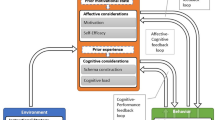Abstract
Learning to program is a difficult process for many students anywhere in the world. Our experience indicates that the greatest difficulties start when the concept of loops is introduced. Since this is a difficult concept to learn, we think of an activity that, in our perspective, could lead to a better understanding of that concept. To do this, we created a visual representation of the loop control structure, through cards. In order to collect some indicators on the effectiveness of this methodology, we carried out an experiment using 2 groups. In one group the concept of the loop was explained in the traditional way and in the other a new methodology was applied. At the end, tests were performed on paper with exercises on loops and linked loops. An activity was also carried out using a Brain Computer Interface, the Mindwave device, in which students had to answer a set of questions about loops and linked loops. The results indicate that the students who were submitted to the new card methodology obtained better results, indicating that the methodology had some effectiveness.
Access this chapter
Tax calculation will be finalised at checkout
Purchases are for personal use only
Similar content being viewed by others
References
Hawi, N.: Causal attributions of success and failure made by undergraduate students in an introductory-level computer programming course. Comput. Educ. 54(4), 1127–1136 (2010). https://doi.org/10.1016/j.compedu.2009.10.020
Watson, C., Li, F.W.B.: Failure rates in introductory programming revisited. In: Proceedings of the 2014 Conference on Innovation and Technology in Computer Science Education, ITiCSE 2014 (2014). https://doi.org/10.1145/2591708.2591749
Jenkins, T.: On the Difficulty of Learning to Program. Language (Baltim) (2002)
Robins, A., Rountree, J., Rountree, N.: Learning and teaching programming: a review and discussion. Comput. Sci. Educ. (2003). https://doi.org/10.1076/csed.13.2.137.14200
Lahtinen, E., Ala-Mutka, K., Järvinen, H.-M.: A study of the difficulties of novice programmers. ACM SIGCSE Bull. (2006). https://doi.org/10.1145/1151954.1067453
Gray, S.A., Goldberg, W.D., Byrnes, N.C.: Novices and programming: merely a difficult subject (why?) or a means to mastering metacognitive skills? [Review of the book Studying the Novice Programmer]. J. Educ. Res. Comput. (2007)
Pattis, R.: Karel the Robot: A Gentle Introduction to the Art of Programming. Wiley, Hoboken (1981)
Naps, T.L., Eagan, J.R., Norton, L.L.: JHAVÉ—an environment to actively engage students in Web-based algorithm visualizations. ACM SIGCSE Bull. (2004). https://doi.org/10.1145/331795.331829
Roberts, E.: An overview of MiniJava. ACM SIGCSE Bull. (2004)
Ben-Bassat Levy, R., Ben-Ari, M., Uronen, P.A.: The Jeliot 2000 program animation system. Comput. Educ. 40, 1–15 (2003)
Kölling, M., Quig, B., Patterson, A., Rosenberg, J.: The BlueJ system and its pedagogy. Comput. Sci. Educ. (2003). https://doi.org/10.1076/csed.13.4.249.17496
Pears, A., et al.: A survey of literature on the teaching of introductory programming. In: Working Group Reports on ITiCSE on Innovation and Technology in Computer Science Education, ITiCSE-WGR 2007 (2007). https://doi.org/10.1145/1345443.1345441
Rajala, T., Laakso, M.-J., Kaila, E., Salakoski, T.: VILLE – a language-independent program visualization tool. In: Seventh Baltic Sea Conference on Computing Education Research (Koli Call. 2007) (2007)
Santos, Á., Gomes, A., Mendes, A.J.: Integrating new technologies and existing tools to promote programming learning. Algorithms (2010). https://doi.org/10.3390/a3020183
Dale, N.B.: Most difficult topics in CS1: results of an online survey of educators. ACM SIGCSE Bull. 38(2), 49–53 (2006). https://doi.org/10.1145/1138403.1138432
Zhang, J., Atay, M., Caldwell, E.R., Jones, E.J.: Visualizing loops using a game-like instructional module. In: Proceedings - 2013 IEEE 13th International Conference on Advanced Learning Technologies, ICALT 2013 (2013). https://doi.org/10.1109/ICALT.2013.137
Grover, S., Basu, S.: Measuring student learning in introductory block-based programming: examining misconceptions of loops, variables, and Boolean logic. In: Proceedings of the 2017 ACM SIGCSE Technical Symposium on Computer Science Education, SIGCSE 2017 (2017). https://doi.org/10.1145/3017680.3017723
Rudder, A., Bernard, M., Mohammed, S.: Teaching programming using visualization. In: Proceedings of the Sixth IASTED International Conference on Web-Based Education, WBED 2007, vol. 2 (2007)
Eagle, M., Barnes, T.: Wu’s castle: teaching arrays and loops in a game. In: Proceedings of the 13th Annual Conference on Innovation and Technology in Computer Science Education, ITiCSE 2008 (2008). https://doi.org/10.1145/1384271.1384337
Catrambone, R.: The subgoal learning model: creating better examples so that students can solve novel problems. J. Exp. Psychol. Gen. (1998). https://doi.org/10.1037/0096-3445.127.4.355
Morrison, B.B., Decker, A., Margulieux, L.E.: Learning loops: a replication study illuminates impact of HS courses. In: Proceedings of the 2016 ACM Conference on International Computing Education Research, ICER 2016 (2016). https://doi.org/10.1145/2960310.2960330
Morrison, B.B., Margulieux, L.E., Guzdial, M.: Subgoals, context, and worked examples in learning computing problem solving. In: Proceedings of the 2015 ACM Conference on International Conference on International Computing Education Research, ICER 2015 (2015). https://doi.org/10.1145/2787622.2787733
Turbak, F., Royden, C., Stephan, J., Herbst, J.: Teaching recursion before loops in CS1. Appear. J. Comput. Small Coll. 14, 86–101 (1999)
Waters, R.C.: A method for analyzing loop programs. IEEE Trans. Softw. Eng. 5(3), 237–247 (1979). https://doi.org/10.1109/TSE.1979.234185
Fernández Alemán, J.L., Oufaska, Y.: SAMtool, a tool for deducing and implementing loop patterns. In: Proceedings of the Fifteenth Annual Conference on Innovation and Technology in Computer Science Education, ITiCSE 2010 (2010). https://doi.org/10.1145/1822090.1822111
Spüler, M., Krumpe, T., Walter, C., Scharinger, C., Rosenstiel, W., Gerjets, P.: Brain-computer interfaces for educational applications. In: Buder, J., Hesse, F.W. (eds.) Informational Environments, pp. 177–201. Springer, Cham (2017). https://doi.org/10.1007/978-3-319-64274-1_8
Neurosky Mindwave User Guide: Neurosky Mindwave User Guide (2018)
Pfurtscheller, G.: Functional brain imaging based on ERD/ERS. Vis. Res. 41(10–11), 1257–1260 (2001). https://doi.org/10.1016/S0042-6989(00)00235-2
Acknowledgment
The authors would like to thank all students that participated in the experiment.
Author information
Authors and Affiliations
Corresponding author
Editor information
Editors and Affiliations
Rights and permissions
Copyright information
© 2021 Springer Nature Switzerland AG
About this paper
Cite this paper
Gomes, A., Teixeira, A.R., Mendes, A.J. (2021). A New Methodology to Learn Loops: Validation through Brain Computer Interaction. In: Schmorrow, D.D., Fidopiastis, C.M. (eds) Augmented Cognition. HCII 2021. Lecture Notes in Computer Science(), vol 12776. Springer, Cham. https://doi.org/10.1007/978-3-030-78114-9_3
Download citation
DOI: https://doi.org/10.1007/978-3-030-78114-9_3
Published:
Publisher Name: Springer, Cham
Print ISBN: 978-3-030-78113-2
Online ISBN: 978-3-030-78114-9
eBook Packages: Computer ScienceComputer Science (R0)




